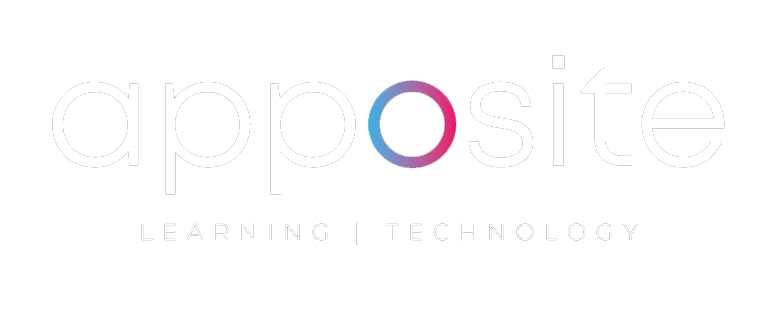Introduction
As the name suggests, microlearning strategies break down larger content into smaller pieces of content units that are easier for learners to absorb knowledge. It’s a constant challenge to keep up with the rapid changes in the workplace in today’s fast-paced business environment, and organizations must continuously evolve and adapt to remain competitive.
What Is Microlearning and Continuous Improvement?
Microlearning, the practice of delivering learning content in short, focused bursts, offers a solution to learners for easy knowledge retention. It aligns perfectly with the principles of continuous improvement by providing ongoing, incremental learning opportunities that help employees adapt quickly to changing business demands.
Why Microlearning Strategies Are Essential for Continuous Improvement?
Microlearning strategies are beneficial and foster a culture of continuous improvement. By breaking down complex information into digestible units, organizations can ensure that learning is absorbed and applied effectively in day-to-day operations.
Understanding Microlearning in the Context of Continuous Improvement.
Microlearning consists of short, focused sessions that teach specific skills or concepts quickly. These sessions last from a minute and above and use various formats, such as videos, infographics, quizzes, and interactive modules.
Key Characteristics of Microlearning
Microlearning strategies are often:
- Short and focused, as they address a single LO (Learning Objective).
- Engaging and interactive for the users because of the use of multimedia that tends to boost learner engagement.
- Mobile-friendly as they can be accessed anywhere and anytime on any device.
- Encourage immediate application of knowledge.
The Connection Between Microlearning and Continuous Improvement
Microlearning offers concise, relevant training that supports an employee’s goals and skill sets without interrupting their workflow. Continuous improvement involves making small, iterative changes based on feedback from these courses to boost processes, productivity, and performance.
Implementing Effective Microlearning Strategies
Identifying Learning Objectives and Target Areas for Improvement
Conduct a needs assessment to identify skill gaps and performance bottlenecks. Set clear, measurable learning objectives that align with your organization’s continuous improvement goals, ensuring each microlearning module has a specific purpose and delivers value.
Designing Engaging Microlearning Content
The success of a microlearning strategy relies on high-quality content. Design engaging, visually appealing content aligned with learning objectives. Incorporate infographics, videos, and interactive scenarios to engage learners and accommodate various learning styles.
Leveraging Technology for Microlearning Delivery
Technology is essential for effective microlearning. A solid Learning Management System (LMS) or microlearning platform that supports multimedia content and mobile access is crucial. The LMS helps track learner progress and assess content effectiveness, allowing for continuous improvement of microlearning strategies.
Integrating Microlearning into Daily Workflows
Microlearning can be integrated into daily workflows to enhance continuous improvement. Encourage employees to engage with microlearning during downtime, such as between meetings or commutes.
Overcoming Challenges in Microlearning Implementation
Addressing Resistance to Change: A key challenge in implementing microlearning is overcoming resistance to change. To address this, clearly communicate the benefits and show how it can enhance performance and make learning more convenient.
Ensuring Content Quality and Relevance: Quality is key when it comes to microlearning. Ensure each module is well-structured, visually appealing, and aligned with the organization’s strategic goals. Update content regularly to keep it fresh and relevant.
Balancing Microlearning with Other Training Methods: While microlearning is a powerful tool, it shouldn’t replace all training. A blended approach combining microlearning with traditional training methods, such as workshops, seminars, and in-depth courses, provides a comprehensive learning experience.
Maintaining Learner Motivation and Engagement: Incorporate gamification elements like badges, points, and leaderboards to enhance learner engagement. Recognize and reward achievements to foster a sense of accomplishment and competition.
Benefits of Microlearning for Continuous Improvement
Increased Retention and Application of Knowledge
Microlearning boosts retention and encourages learners to apply their knowledge more effectively. According to a study by RPS, microlearning can improve retention rates by up to 80% compared to traditional training methods.
Flexibility and Accessibility
Microlearning content can be consumed on demand; employees can access training anytime they need it—whether to reinforce a concept or learn a new skill on the go.
Cost-effectiveness and Scalability
Microlearning is more accessible and affordable to develop than traditional training programs. It is also highly scalable, allowing organizations to reach large, geographically dispersed teams.
Personalization and Adaptability
Microlearning modules can be tailored to fit individuals’ unique learning needs, making it easier to address specific skill gaps and keep training relevant.
The Future of Microlearning in Continuous Improvement
Emerging Trends in Microlearning Technology – Emerging technologies like Artificial Intelligence (AI), Virtual Reality (VR), and Augmented Reality (AR) will revolutionize microlearning by making training more interactive and engaging. These tools allow employees to practice skills in safe environments, such as assembly line tasks with AR or VR sales simulations. AI will automate content creation and personalized learning paths, while cloud computing and mobile technologies ensure access for remote workers.
Integration with Artificial Intelligence and Machine Learning – AI and machine learning will be crucial in personalizing microlearning experiences by analyzing individual learning behaviors and preferences. With tailored learning journeys, AI can recommend the next module based on a learner’s engagement and performance. It can also identify skill gaps and align content to address them, ensuring relevance and adaptability.
Microlearning and a Culture of Continuous Improvement – As microlearning becomes integrated into organizational culture, it fosters continuous improvement by supporting ongoing skill development. Unlike traditional training, microlearning offers frequent, accessible learning moments seamlessly fitting into daily workflows. Breaking complex concepts into small, digestible chunks reduces cognitive load, helping employees integrate learning without disrupting productivity.
Conclusion
Microlearning is an effective strategy for organizations focused on continuous improvement. Providing engaging content in short bursts enhances skill development and retention and fosters a culture of ongoing learning.
Discover how Apposite Learning Solutions can help you implement effective microlearning strategies to drive continuous organizational improvement. Learn more about our microlearning services and take the first step toward optimizing your training strategy today. Contact us for a free microlearning consultation.

